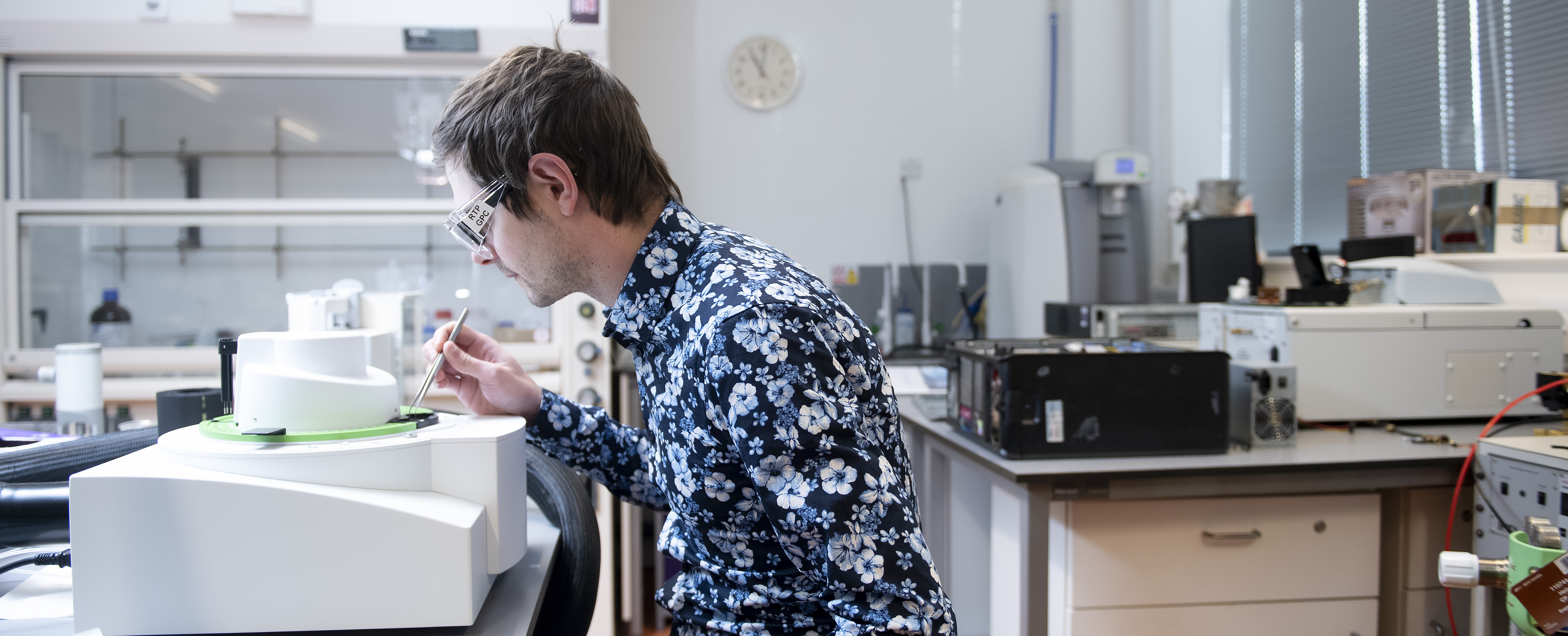Polymer Synthesis and Characterisation

Warwick is recognised globally as a centre of excellence for polymer research. WSS provides a route for industry and other HEIs to access our state-of-the-art Polymer Characterisation Research Technology Platform (RTP) and the expertise available for polymer synthesis. Our services include gas and liquid chromatography, size exclusion chromatography, particle size analysis and thermal analysis, as well as bespoke synthesis. Contact Claire Gerard () or visit the Polymer RTP webpages to find out more.
Gas Chromatography
Gas Chromatography is used to separate, identify and quantify complex mixtures of chemicals that can be vaporised in a gas chromatograph without decomposition. It is often used to test the purity of a substance.
Gas Chromatography-Mass Spectrometry (GC-MS)
GC-MS couples a gas chromatograph with a mass spectrometer. It is a very sensitive technique that can distinguish between molecules of similar weight, such as compounds in environmental materials.
High-Performance Liquid Chromatography (HPLC)
HPLC provides qualitative and quantitative analysis of compounds dissolved in a liquid sample. It separates and identifies compounds by the difference in speed that they travel through the chromatograph.
Liquid Chromatography-Mass Spectrometry (LC-MS)
LC-MS is a highly sensitive technique that combines the physical separation capabilities of liquid chromatography with the mass analysis capabilities of mass spectrometry.
Gel Permeation Chromatography (GPC)
GPC separates molecules in a solution based on size and measures their weight in relation to known standards. A range of solvents, detectors and temperatures can be applied.
Solution NMR
Nuclear Magnetic Resonance is an effect in which nuclei in a magnetic field absorb and re-emit electromagnetic energy. It is used to study chemical bonds and the structure of crystals and non-crystalline materials.
Laser Diffraction
Laser Diffraction measures the size of particles from nanometre to millimetre scale by observing the diffraction patterns of a laser beam passed through a sample. It is often used in environmental samples, e.g. soil analysis.
Dynamic Light Scattering
DLS is a technique for measuring the size of particles suspended in liquid at a sub-micron scale. It determines particle size in relation to their velocity when they are bombarded by the solvent molecules that surround them.
Drop Shape Analysis
Drop Shape Analysis is used to measure either a surface or a droplet of liquid. It measures the contact angle at the interface between the liquid and solid surface as well as surface energy or interfacial tension.
Fourier-Transform Infrared Spectroscopy (FT-IR)
FT-IR is a widely used technique that measures the infrared absorption of a sample to identify and quantify the chemicals present. It has wide applications including forensics, plastics recycling and pharmaceutics.
Thermogravimetric Analysis
TGA measures mass changes in a sample over time, recording how it responds to different temperatures. This can be useful for determining factors such as composition, purity and thermal stability.
Differential Scanning Calorimetry (DSC)
DSC is widely used to determine the thermal transitions of polymeric materials, including melting point, melting range, oxidation stability and glass transition and crystallisation temperatures.
Thermomechanical Analysis
TMA measures the deformation of a sample under stress - such as compression, tension, flexure or torsion - as the temperature changes. It is often used to study the expansion, softening or shrinkage of materials, as well as the glass transition point.
Dynamic Mechanical Analysis
DMA is a sensitive technique used to measure the mechanical behaviour and properties of materials, including stiffness and damping, based on how they respond to controlled stress or strain.
Mechanical testing
Our mechanical tester is often used to measure the mechanical properties of materials via compression or tensile testing. This can give yield strength and stress/strain measurements.
Rheometry
Rheometry measures how viscous fluids or soft solids flow in response to applied forces. It can be used to assess factors such as elasticity, viscosity and lubrication.
Laser Flash Analysis
Laser flash analysis is a technique used to measure the rate of heat transfer (thermal diffusivity) inside a solid material.
